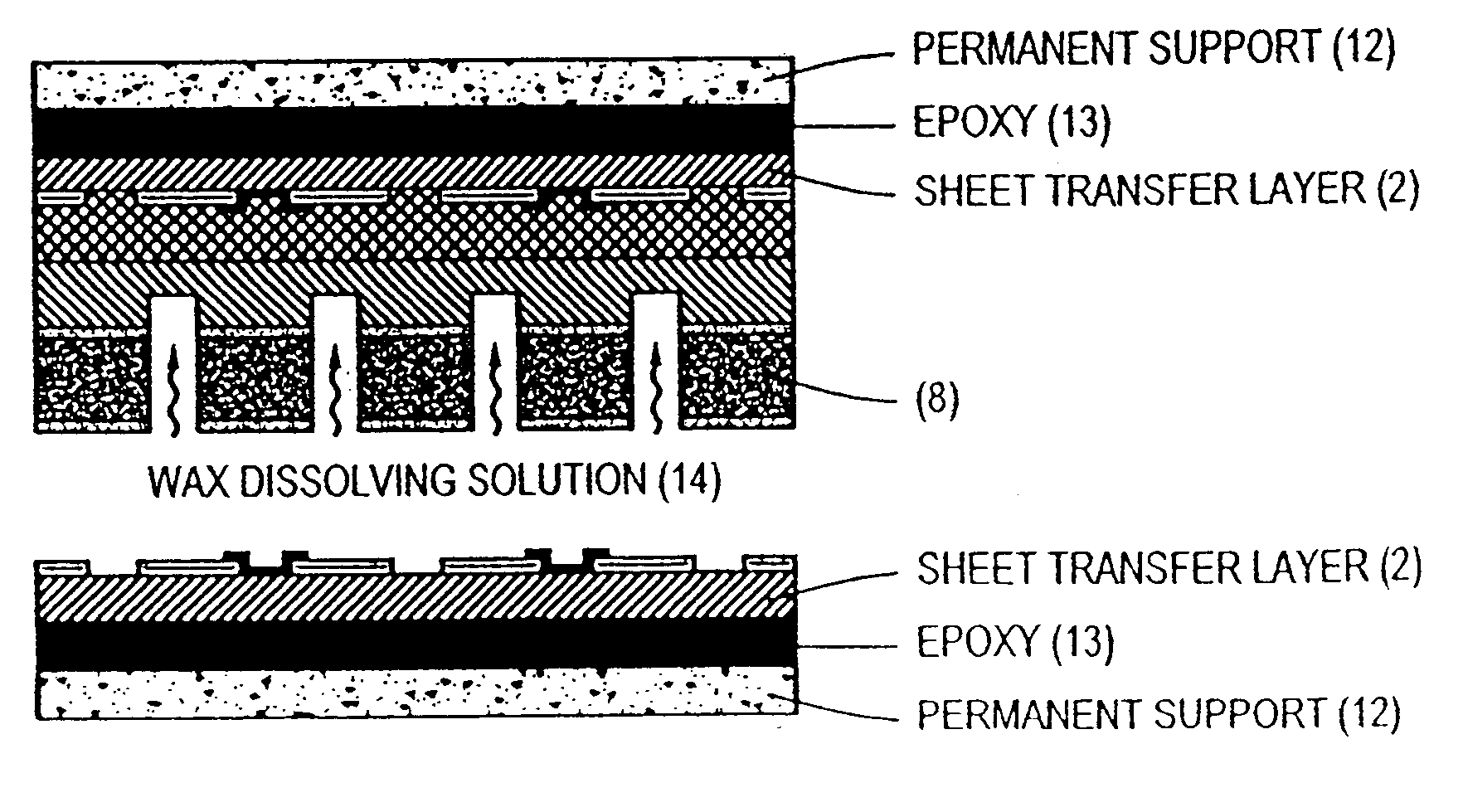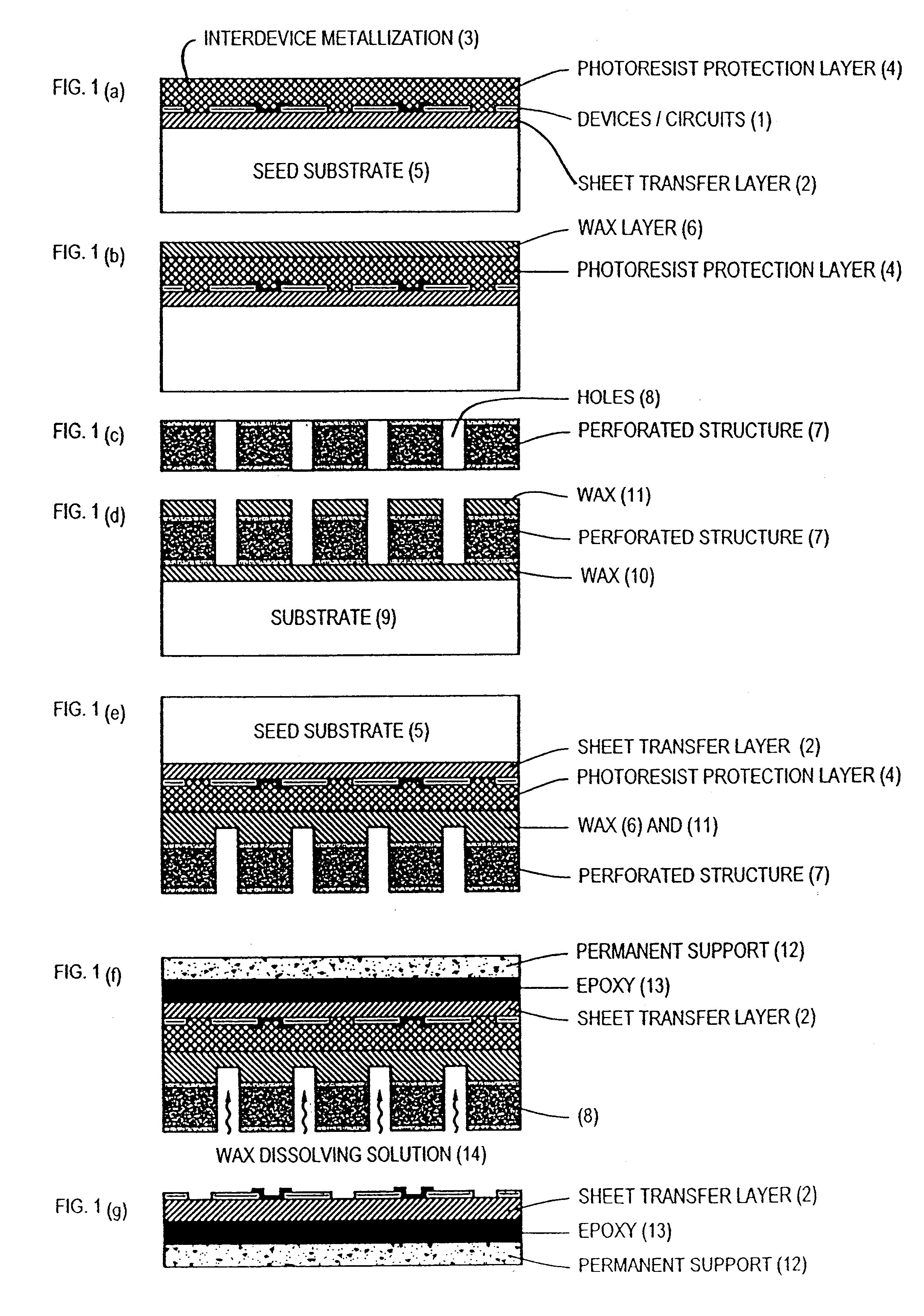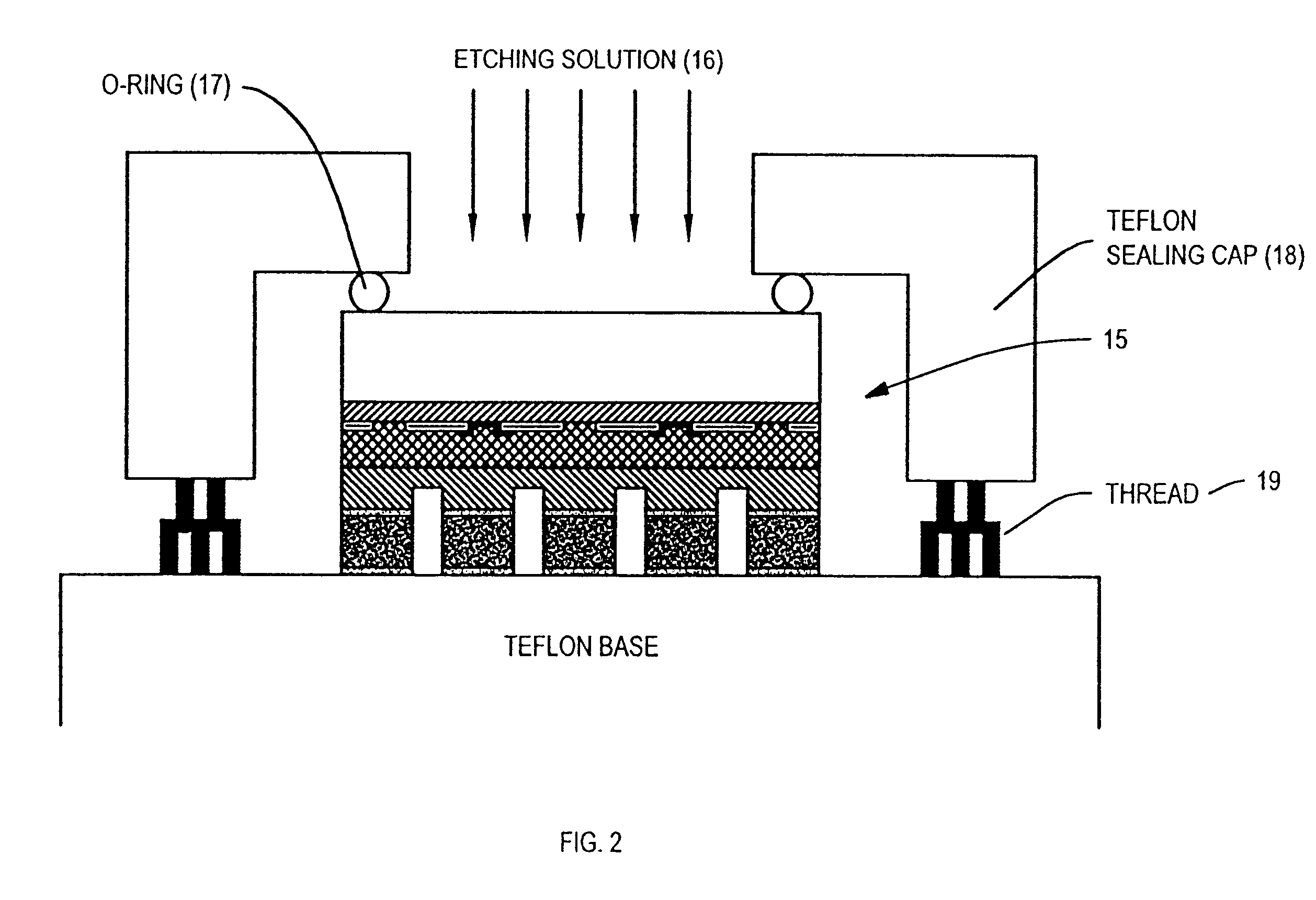Method for transferring semiconductor device layers to different substrates
- Summary
- Abstract
- Description
- Claims
- Application Information
AI Technical Summary
Benefits of technology
Problems solved by technology
Method used
Image
Examples
Embodiment Construction
1. The Preferred Embodiment.
As shown by FIG. 1(a), the initial preferred step of this method is the fabrication of semiconducting devices and / or circuits 1 on a thin active layer (sheet transfer layer 2) including, if desired, interconnection metallization 3 between the devices and / or circuits, as appropriate.
Examples of the semiconducting devices and / or circuits 1 fabricated into the active layer 2 include, but are not limited to, active matrix circuitry for displays and a matrix of radiation sensing elements. Other semiconducting devices and / or circuits, including passive devices, can be also used.
Interconnection metallization 3 comprises preferably gold, or aluminum or other metal compatible with the particular semiconducting devices and / or circuits 2 used. The choice of a particular metal for interconnection metallization 3 is made according to general principles of the art of fabrication of the semiconducting devices and / or circuits 2 known to those reasonably skilled in the ar...
PUM
 Login to View More
Login to View More Abstract
Description
Claims
Application Information
 Login to View More
Login to View More - R&D
- Intellectual Property
- Life Sciences
- Materials
- Tech Scout
- Unparalleled Data Quality
- Higher Quality Content
- 60% Fewer Hallucinations
Browse by: Latest US Patents, China's latest patents, Technical Efficacy Thesaurus, Application Domain, Technology Topic, Popular Technical Reports.
© 2025 PatSnap. All rights reserved.Legal|Privacy policy|Modern Slavery Act Transparency Statement|Sitemap|About US| Contact US: help@patsnap.com



